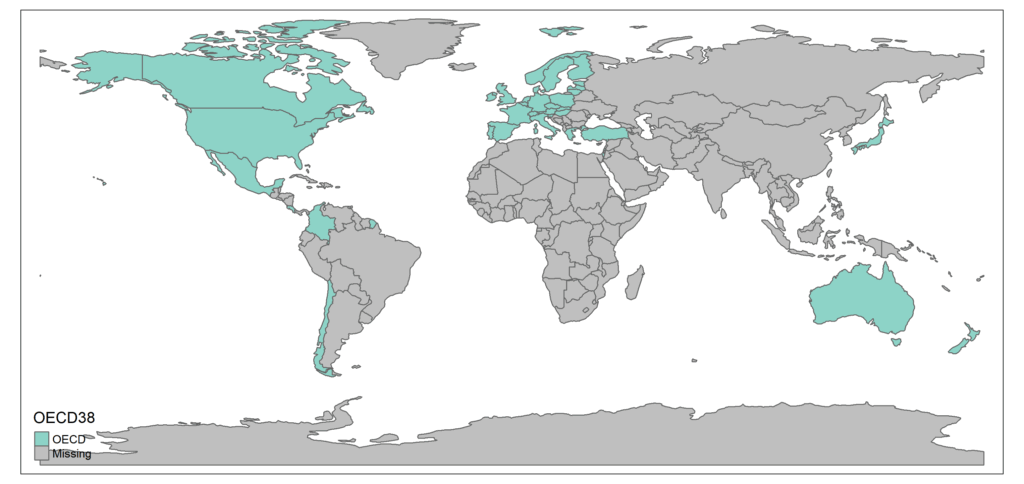The Organization for Economic Co-operation and Development (OECD) plays a big role in supporting migration and integration for many countries. Unlike the EU, the OECD does not set guidelines or policies for migration and integration. Instead, they conduct an in-depth analysis of international migration flows, integration policies and situations, and support member countries to initiate evidence-based policies. Their general focus is more on economic growth and expansion in the OECD countries and therefore, their analysis and report on migration are mostly related to labor market integration and economic impact.
According to their reports, the number of migrants to the OECD countries has been increasing. While integration policies for refugees, migrant women, and youth should improve further, the employment rate of migrants in the host countries has improved significantly (1). As a result, more than 15% of the workforce is supplied by migrants in the OECD countries. Migrants can contribute to societies economically, especially when they are integrated. Another report shows that migrants contribute to societies more than what they receive from societies (social benefits, public services) (2).
Since many OECD countries face labor shortages, labor migrants are considered a potential solution. In addition to the supply of workforce, they can bring diversity, new business, and further economic and social development of the host society. Therefore, it is essential for the host country to have a good economic condition and high quality of life to be attractive to migrants. In addition, adequate and prompt visa procedures, tax policy, gender equality, attitude towards immigrants, and potential for long-term employment are important factors (3). It seems that many countries should improve these factors as many migrants leave the host country within a short term, e.g. 5 years after their arrival.
The OECD collaborates with the EU to monitor the integration of migrants in 40 countries. They evaluate approximately 80 indicators, such as labor market and social integration. According to their report, many migrants tend to work with “over-qualified jobs” and that could be a reason why the host country can’t keep them for a long-term (4). Much effort is needed for each country, and the OECD helps provide a guide by conducting analyses of integration levels for each country.
Apart from economic impact and labor market for migrants, the OECD collaborates with the UNHCR to ensure complementary pathways for migrants who migrate for international protection. Between 2010-2022, over 2 million people were able to migrate to the OECD countries either via work, study, or family reunification, instead of asylum status from the countries where many refugees come from (5).
As we can see, the OECD measures and monitors migration mainly but not exclusively from economic aspects, and help each country to integrate migrants for their sustainable economic growth.
Extra information:
The OECD is a successor of the OEEC (Organization for European Economic Co-operation) that was established in 1948 based on the Marshal Plan aiming for the reconstruction of Europe after World War II. In 1960, the OECD was formed with more non-European countries, such as Japan, Canada, and the US. The OECD tackles various global issues related to education, economy, migration, climate, and more by conducting an in-depth analysis of each member country and monitoring the situations for various topics. As of now, 38 countries are affiliated with the OECD and the EU is also one of the participating states.

References
1. OECD. OECD. [cited 2024 Oct 18]. Migration. Available from: https://www.oecd.org/en/topics/migration.html
2. OECD. OECD. [cited 2024 Oct 18]. Economic impact of migration. Available from: https://www.oecd.org/en/topics/economic-impact-of-migration.html
3. OECD. OECD. [cited 2024 Oct 18]. Migration policies, returns, and attracting talent. Available from: https://www.oecd.org/en/topics/migration-policies-returns-and-attracting-talent.html
4. OECD. OECD. [cited 2024 Oct 18]. Economic and social integration of migrants. Available from: https://www.oecd.org/en/topics/economic-and-social-integration-of-migrants.html
5. OECD. OECD. [cited 2024 Oct 18]. International migration trends. Available from: https://www.oecd.org/en/topics/international-migration-trends.html
